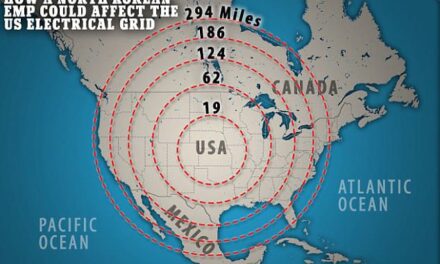The possibility of a nuclear conflict with Russia is a concern that feels more real today than at any time since the Cold War. With ongoing tensions in Ukraine and a shifting global landscape, Russia’s nuclear doctrine and strategy are now under intense scrutiny. What are the chances that Moscow might resort to nuclear weapons? In this post, we’ll examine the factors that could lead to escalation and consider how likely a nuclear conflict with Russia truly is.
Russia’s Nuclear Doctrine: Escalate to De-Escalate
Russia’s nuclear strategy includes a controversial doctrine often described as “escalate to de-escalate.” This approach suggests that Russia may use a limited nuclear strike in a conventional conflict to force its opponents into backing down. Unlike the United States, which generally views nuclear weapons as a last resort, Russia’s doctrine leaves room for early, tactical nuclear use to gain leverage.
Russia has consistently developed smaller, low-yield nuclear weapons intended for battlefield use, indicating its willingness to consider nuclear options in a regional conflict. Experts argue that this doctrine increases the risk of nuclear war because it lowers the threshold for deployment. If Moscow feels backed into a corner, or if it’s seeking to make a decisive impact, limited nuclear use could be a calculated move rather than an unthinkable last step.
The War in Ukraine: A Key Flashpoint
Russia’s invasion of Ukraine in 2022 has brought these nuclear risks into sharper focus. As the conflict drags on, some experts believe the chances of nuclear escalation have increased. While Russia’s conventional forces have been effective in some areas, they’ve faced significant resistance and losses. If Russia’s goals remain unmet or if it faces further setbacks, there’s a possibility it might turn to more drastic measures to assert its dominance.
However, it’s essential to consider that nuclear use—even on a limited scale—would invite a massive international response. Western nations have warned of severe consequences if Russia uses nuclear weapons in Ukraine, creating a deterrent of its own. Still, the unpredictable nature of the conflict means the risk is ever-present, and analysts continue to watch for any signs of nuclear posturing from Moscow.
Nuclear Blackmail: Russia’s Strategy of Threats
In recent years, Russia has frequently used nuclear threats as a form of political blackmail. By openly discussing its nuclear capabilities and reminding the world of its arsenal, Russia aims to keep adversaries at bay and discourage interference. This tactic has been on full display during the Ukraine conflict, with officials hinting at the potential for nuclear escalation if NATO oversteps certain boundaries.
While some dismiss this as mere posturing, there’s a danger in underestimating the power of such threats. They serve as reminders that nuclear weapons are not just theoretical; they’re a part of Russia’s active strategy. This approach can create a high-stakes environment where misinterpretations or accidents might lead to catastrophic consequences.
The Dirty Bomb Threat
In recent months, concerns have also grown over the possibility of Russia using a “dirty bomb” in Ukraine—a weapon that spreads radioactive material without a traditional nuclear blast. Though not as destructive as a full-scale nuclear weapon, a dirty bomb could have devastating psychological and environmental impacts. By signaling its potential willingness to use such weapons, Russia adds another layer of uncertainty to the conflict.
This tactic complicates deterrence, as it blurs the line between conventional and nuclear warfare. While a dirty bomb wouldn’t necessarily provoke a full-scale nuclear response, it would certainly escalate the situation, making it harder to predict Moscow’s next moves.
The Role of Low-Yield Nuclear Weapons
Low-yield nuclear weapons, which have a smaller blast radius, are seen by some as a “usable” nuclear option. This concept is controversial, as using even a low-yield nuke risks crossing a threshold that could spiral out of control. Some experts worry that the existence of these weapons makes it more tempting for Russia to consider their use in a military crisis.
Russia’s increasing focus on low-yield options, particularly in a conventional conflict, heightens the risk of limited nuclear war. Advocates for deterrence argue that NATO’s own low-yield capabilities could counterbalance Russia’s, but this arms race logic may ultimately lead to a more dangerous world where nuclear weapons are seen as a viable part of warfare.
How Likely is Nuclear War With Russia?
The chances of a nuclear conflict with Russia remain slim but concerning. Experts are divided on the likelihood, with some saying the threat remains minimal due to deterrence and the catastrophic consequences of nuclear war. Others, however, point out that Russia’s nuclear doctrine, combined with its actions in Ukraine, increases the probability of escalation.
The use of nuclear weapons by Russia would undoubtedly change the world order, drawing widespread condemnation and severe responses from other nuclear powers. But while most leaders understand the devastating implications of nuclear use, the current geopolitical climate is more unpredictable than ever. Factors such as economic sanctions, territorial losses, and domestic pressures within Russia could push Moscow toward extreme measures.
Avoiding Catastrophe: The Importance of Diplomacy
Despite the risks, diplomacy remains a critical tool for avoiding nuclear disaster. Open communication channels between the U.S., NATO, and Russia are essential to prevent misunderstandings. Maintaining arms control agreements, such as New START, can also help reduce the chances of a nuclear arms race and ensure that nuclear arsenals remain under control.
International pressure on Russia to refrain from nuclear escalation continues to be a stabilizing factor, as Moscow recognizes the significant economic and political fallout of such a move. However, as long as nuclear threats remain part of Russia’s strategy, the world must remain vigilant.
Prepared, but Hopeful
The likelihood of nuclear war with Russia is a deeply troubling question. While the risks have increased, nuclear use remains a last resort for both practical and strategic reasons. Staying informed and supporting diplomatic efforts can help reduce these risks. The road ahead is uncertain, but with cautious, deliberate actions, the world may continue to keep nuclear conflict at bay.





